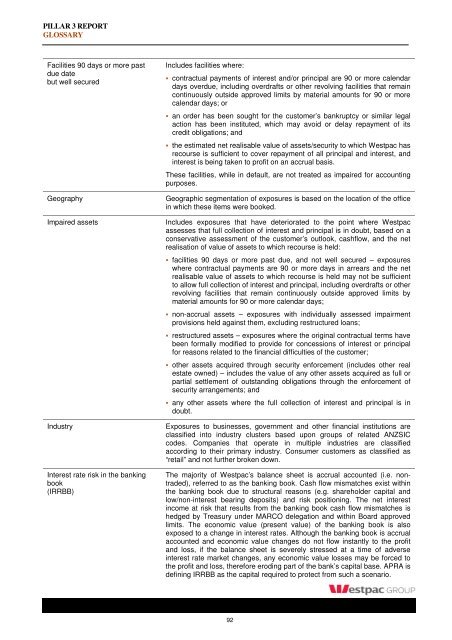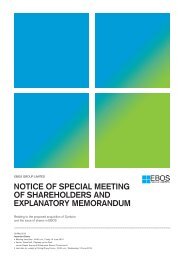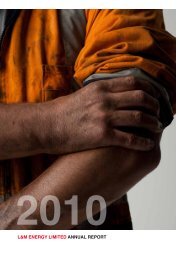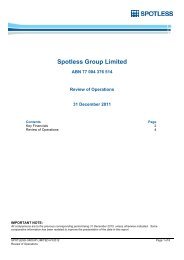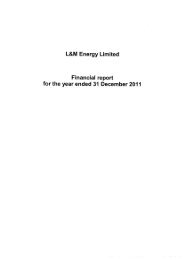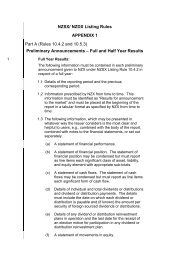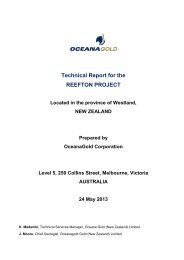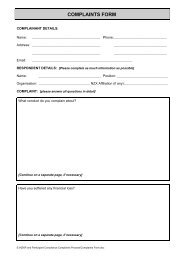Westpac Group Pillar 3 Report March 2013 - Iguana IR Sites
Westpac Group Pillar 3 Report March 2013 - Iguana IR Sites
Westpac Group Pillar 3 Report March 2013 - Iguana IR Sites
You also want an ePaper? Increase the reach of your titles
YUMPU automatically turns print PDFs into web optimized ePapers that Google loves.
PILLAR 3 REPORT<br />
GLOSSARY<br />
Facilities 90 days or more past<br />
due date<br />
but well secured<br />
Geography<br />
Impaired assets<br />
Industry<br />
Interest rate risk in the banking<br />
book<br />
(<strong>IR</strong>RBB)<br />
Includes facilities where:<br />
contractual payments of interest and/or principal are 90 or more calendar<br />
days overdue, including overdrafts or other revolving facilities that remain<br />
continuously outside approved limits by material amounts for 90 or more<br />
calendar days; or<br />
an order has been sought for the customer’s bankruptcy or similar legal<br />
action has been instituted, which may avoid or delay repayment of its<br />
credit obligations; and<br />
the estimated net realisable value of assets/security to which <strong>Westpac</strong> has<br />
recourse is sufficient to cover repayment of all principal and interest, and<br />
interest is being taken to profit on an accrual basis.<br />
These facilities, while in default, are not treated as impaired for accounting<br />
purposes.<br />
Geographic segmentation of exposures is based on the location of the office<br />
in which these items were booked.<br />
Includes exposures that have deteriorated to the point where <strong>Westpac</strong><br />
assesses that full collection of interest and principal is in doubt, based on a<br />
conservative assessment of the customer’s outlook, cashflow, and the net<br />
realisation of value of assets to which recourse is held:<br />
facilities 90 days or more past due, and not well secured – exposures<br />
where contractual payments are 90 or more days in arrears and the net<br />
realisable value of assets to which recourse is held may not be sufficient<br />
to allow full collection of interest and principal, including overdrafts or other<br />
revolving facilities that remain continuously outside approved limits by<br />
material amounts for 90 or more calendar days;<br />
non-accrual assets – exposures with individually assessed impairment<br />
provisions held against them, excluding restructured loans;<br />
restructured assets – exposures where the original contractual terms have<br />
been formally modified to provide for concessions of interest or principal<br />
for reasons related to the financial difficulties of the customer;<br />
other assets acquired through security enforcement (includes other real<br />
estate owned) – includes the value of any other assets acquired as full or<br />
partial settlement of outstanding obligations through the enforcement of<br />
security arrangements; and<br />
any other assets where the full collection of interest and principal is in<br />
doubt.<br />
Exposures to businesses, government and other financial institutions are<br />
classified into industry clusters based upon groups of related ANZSIC<br />
codes. Companies that operate in multiple industries are classified<br />
according to their primary industry. Consumer customers as classified as<br />
“retail” and not further broken down.<br />
The majority of <strong>Westpac</strong>’s balance sheet is accrual accounted (i.e. nontraded),<br />
referred to as the banking book. Cash flow mismatches exist within<br />
the banking book due to structural reasons (e.g. shareholder capital and<br />
low/non-interest bearing deposits) and risk positioning. The net interest<br />
income at risk that results from the banking book cash flow mismatches is<br />
hedged by Treasury under MARCO delegation and within Board approved<br />
limits. The economic value (present value) of the banking book is also<br />
exposed to a change in interest rates. Although the banking book is accrual<br />
accounted and economic value changes do not flow instantly to the profit<br />
and loss, if the balance sheet is severely stressed at a time of adverse<br />
interest rate market changes, any economic value losses may be forced to<br />
the profit and loss, therefore eroding part of the bank’s capital base. APRA is<br />
defining <strong>IR</strong>RBB as the capital required to protect from such a scenario.<br />
92


